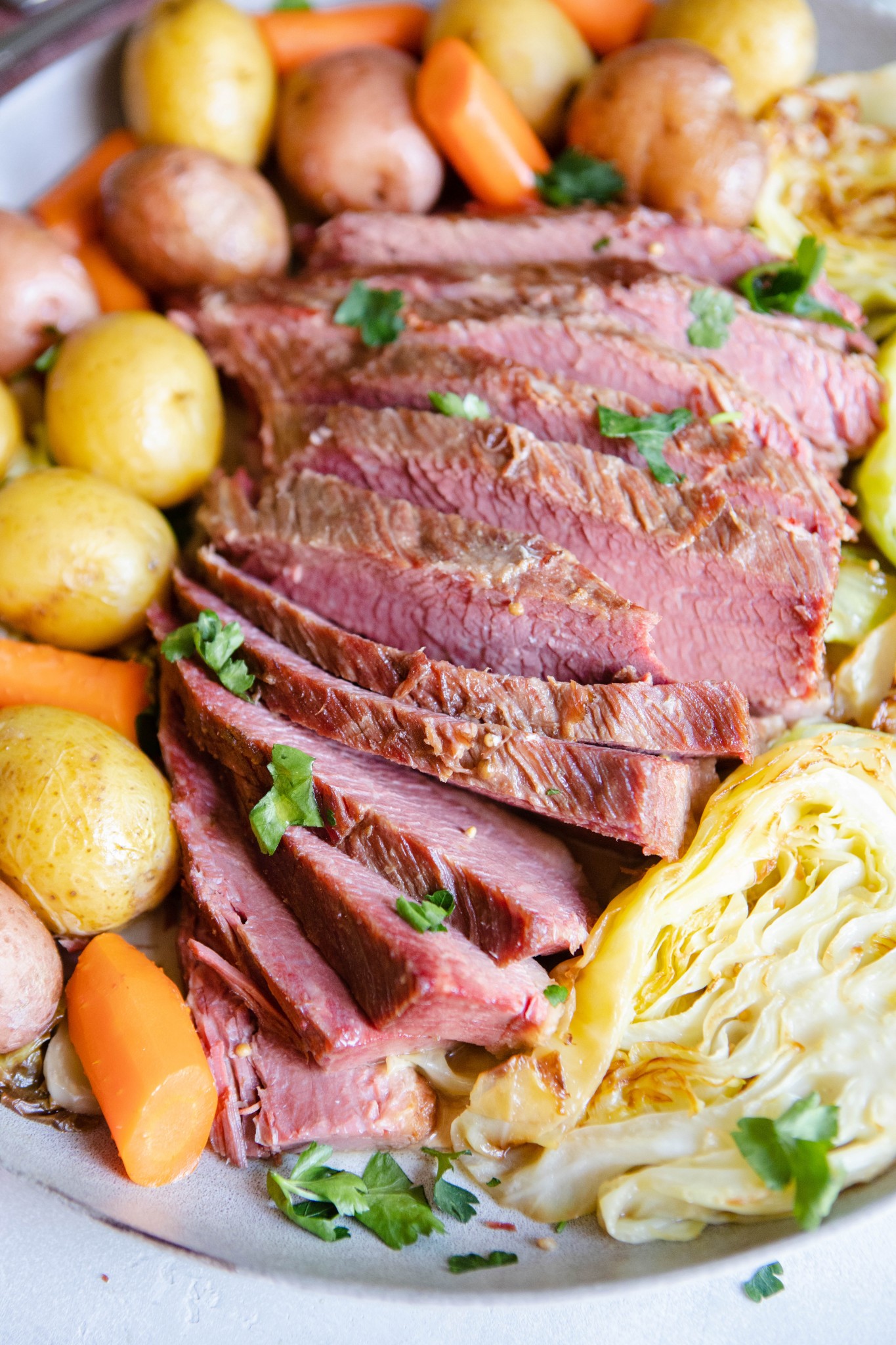
I’m so excited to share with you how to make the best homemade corned beef. The process is rather simple, it just takes some pre-planning on you part, but yields incredible results. Once you’ve got the ingredients and know-how to make your own corned beef brine, you’ll probably never go back to store bought!
Being half Irish (my maiden name is Fogarty), I grew up eating corned beef and cabbage but once a year. I looked forward to that flavorful, pungent and salty meat every March, and I could never understand why my mom only ever made it once a year! That’s because my mom only ever made the store-bought corned beef, which was typically available but once a year.
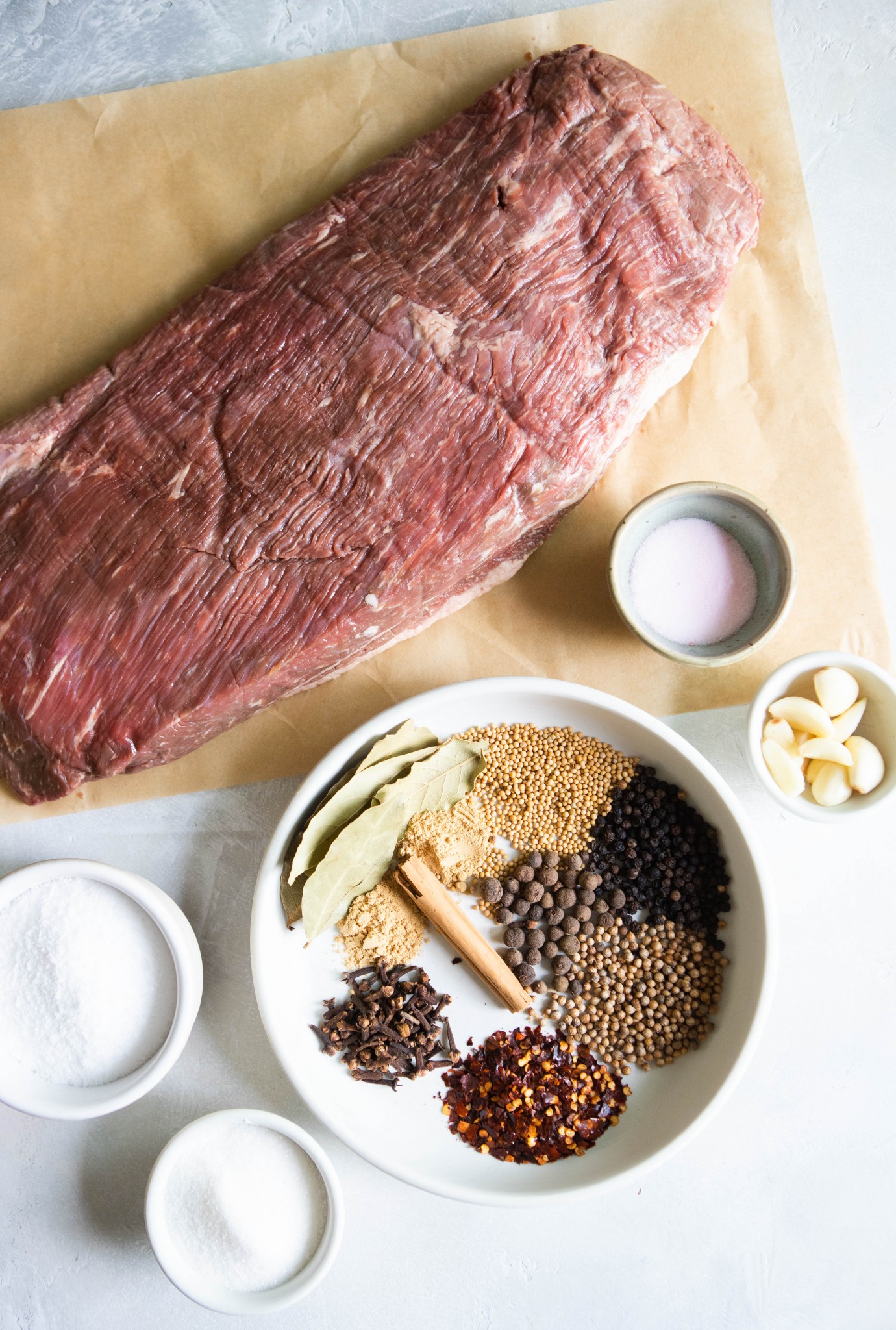
A few years back I learned how relatively simple it was to make my own corned beef though, so now I can enjoy it any time I want! And the truth is, homemade corned beef is 10 times better than store-bought. Isn’t that the case with most foods? 🙂 I recently switched from referring to the America’s Test Kitchen recipe to Michael Ruhlman’s, out of his book Ratio, and it’s worked out great. Following is a slight adaption of that recipe. Read on to learn how to make your own!
Corned beef brine ingredients
- ½ gallon water
- 4-5 teaspoons of pink curing salt
- about ¼ cup granulated sugar
- 10 garlic cloves
- about ½ cup kosher salt
- 2 teaspoons each of black peppercorn, yellow mustard seeds and coriander seeds
- 3 teaspoons dried red pepper flakes
- 2 teaspoons whole allspice
- 2 teaspoons ground nutmeg
- 2-3 whole cinnamon sticks, broken up a bit into smaller pieces
- 6 bay leaves, crumbled
- 2 teaspoons whole cloves
- 2 teaspoons ground ginger
- 1 5 lb beef brisket
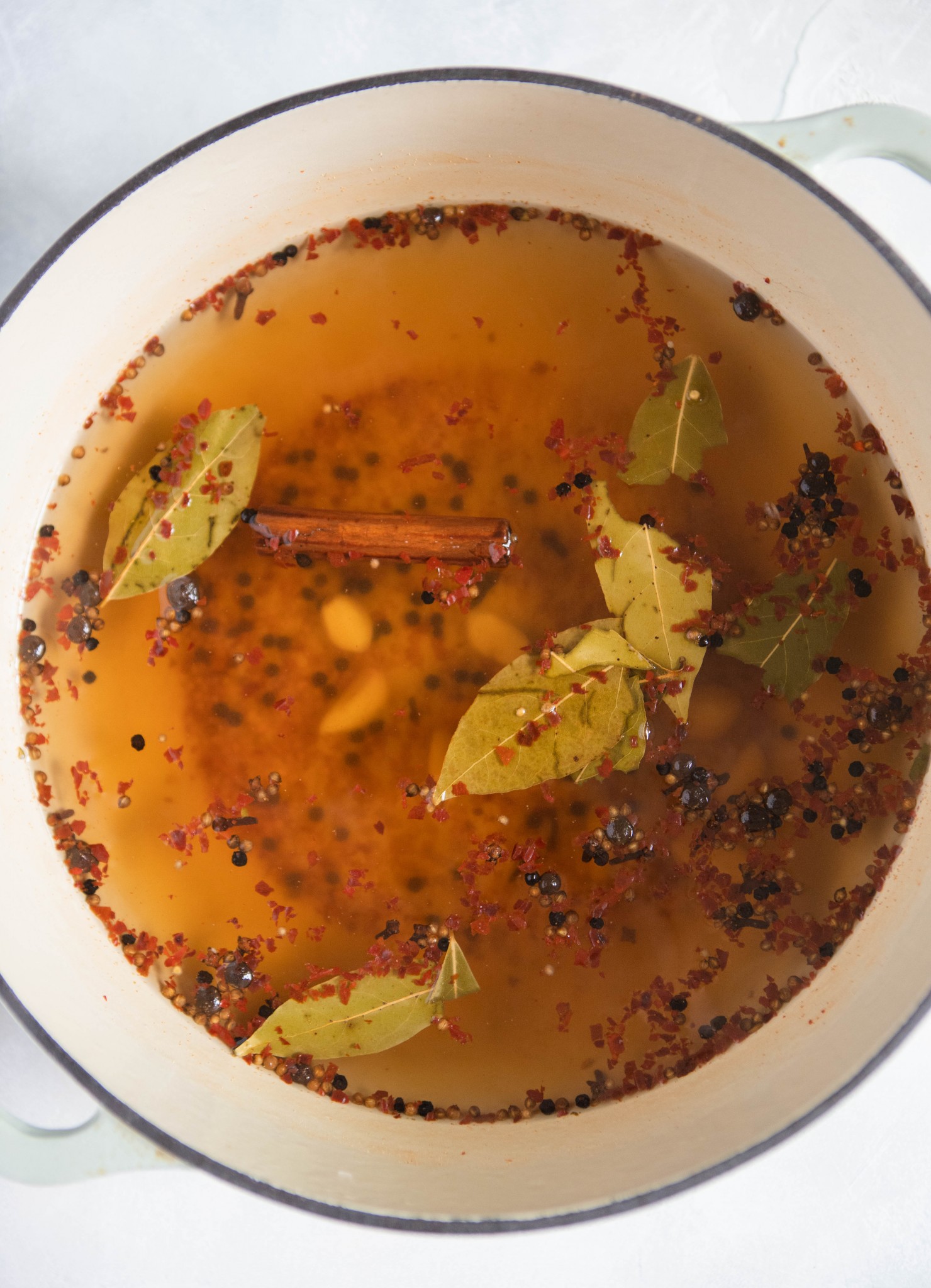
I know this is a long list of ingredients, but please don’t be deterred! Half of them you probably already have at home. The other half can be easily acquired at any local market. You will even find that stores like Sprout’s Farmers Market have them in little bulk containers so you can purchase just a small amount.
Brining the corned beef
Once you’ve gathered all those little bits of seeds and powders, go ahead and mix them up in a bowl or baggie. You’ll be using half to brine the brisket, and the other half to cook it once it’s done brining.
But first the brining part. Combine the water, pink salt, sugar, garlic and salt in a large pot. Take half of the brining seasonings and add them to the pot. Set the other half aside to use for cooking at a later date. Bring the water to a simmer, stirring until the sugar and salts have dissolved. Remove the pot from the heat and allow to come to fully come to room temperature. Refrigerate the brine for an hour or two until it’s completely chilled, then place the brisket in the brine. Refrigerate the brisket in the brine for 4 days.
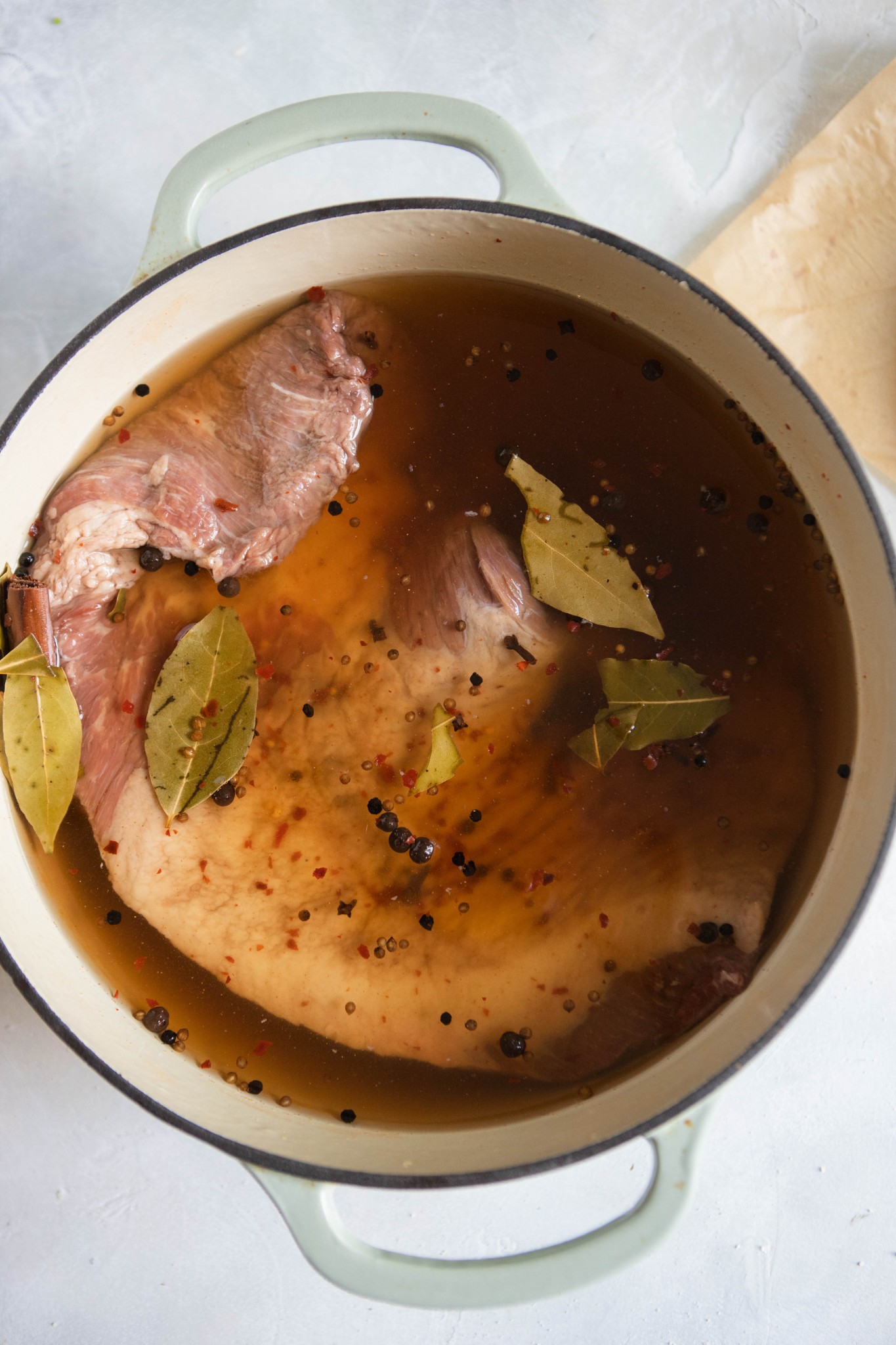
What type of container should you use to store your brisket?
You want a pot or container big enough to hold the brisket in the brine. Your brisket needs to be submerged without it being squeezed and squished too much. My extra large 7.5 quart Dutch oven works, as well as my biggest stock pot. I’ve also seen people use a plastic 6 quart plastic food storage container.
If your container allows your brisket to lay flat and fully submerged, you can refrigerate the brisket and forget about it for 4 days. You may find it necessary to place a plate or even a clean brick on top of the brisket to ensure it stays submerged.
If, however, you need to fold the brisket in half (or even cut it into 2), you will need to make sure to rotate the brisket once a day. Rotating the brisket every day will ensure the entire surface area is submerged in the brine for a good amount of time.
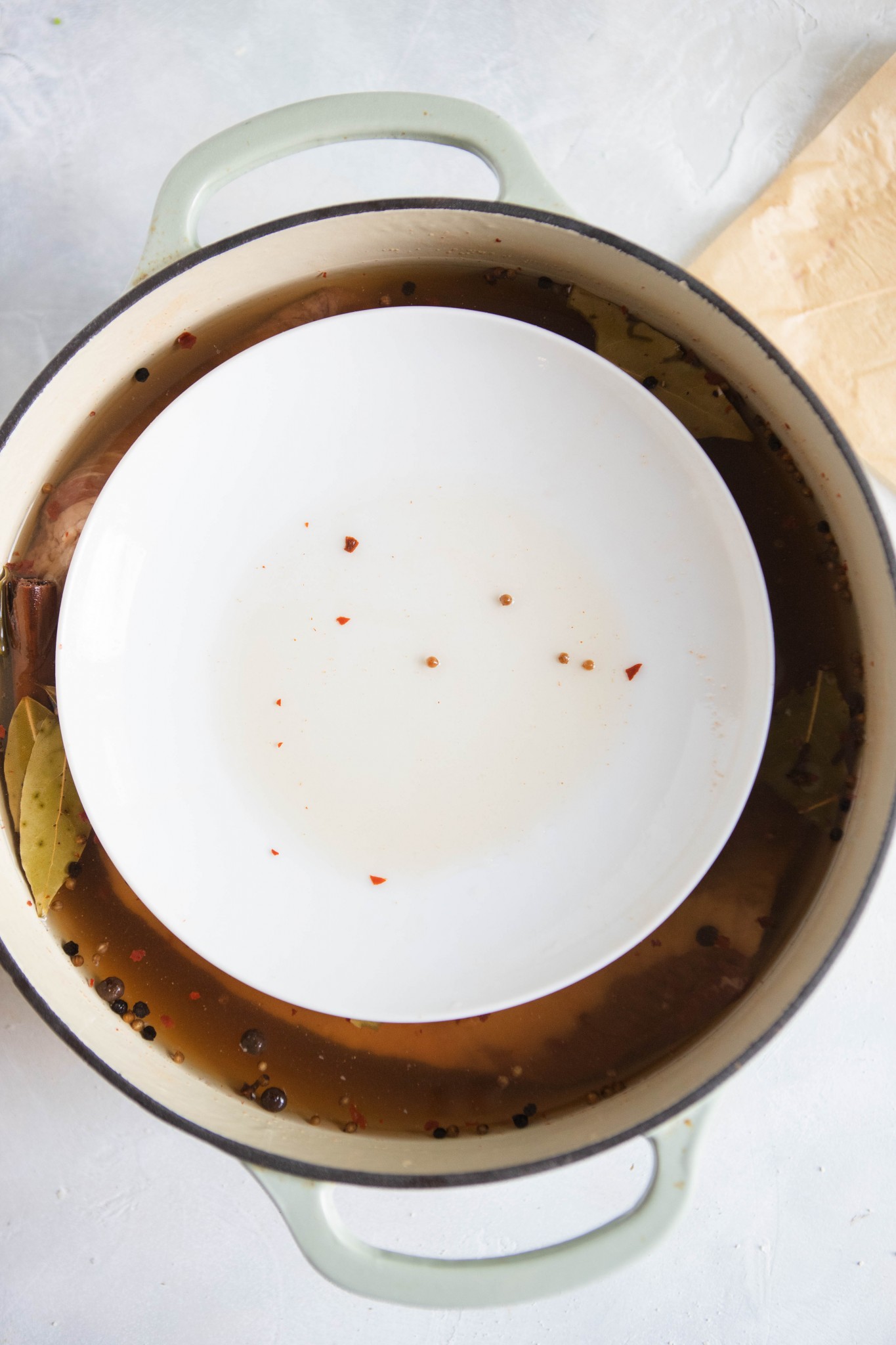
Cooking your homemade corned beef – Stovetop Method
It’s been 4 days and now your beautiful brisket is brined and ready to be turned into something magical!
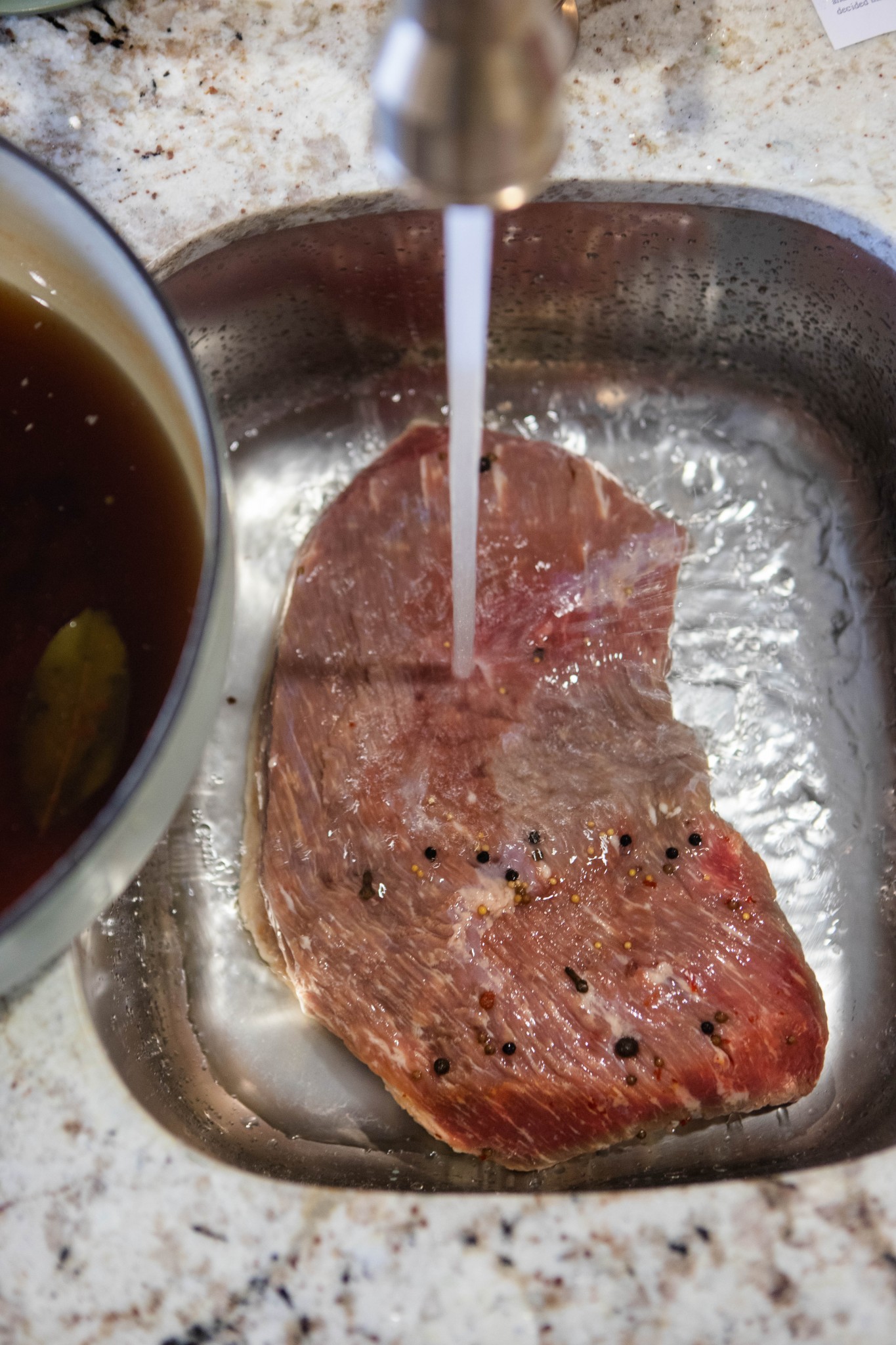
Remove the brisket from the brine and rinse with cold water. To cook on the stovetop, place the brisket in a large pot (the one you used to brine it in works fine), and fill with water to cover the brisket. Add the other half of brining spices we saved, as well as about 4 teaspoons of kosher salt. The ratio is 1.5 teaspoons per quart of water, so to cover my 5 lb brisket, I needed about 3 quarts of water.
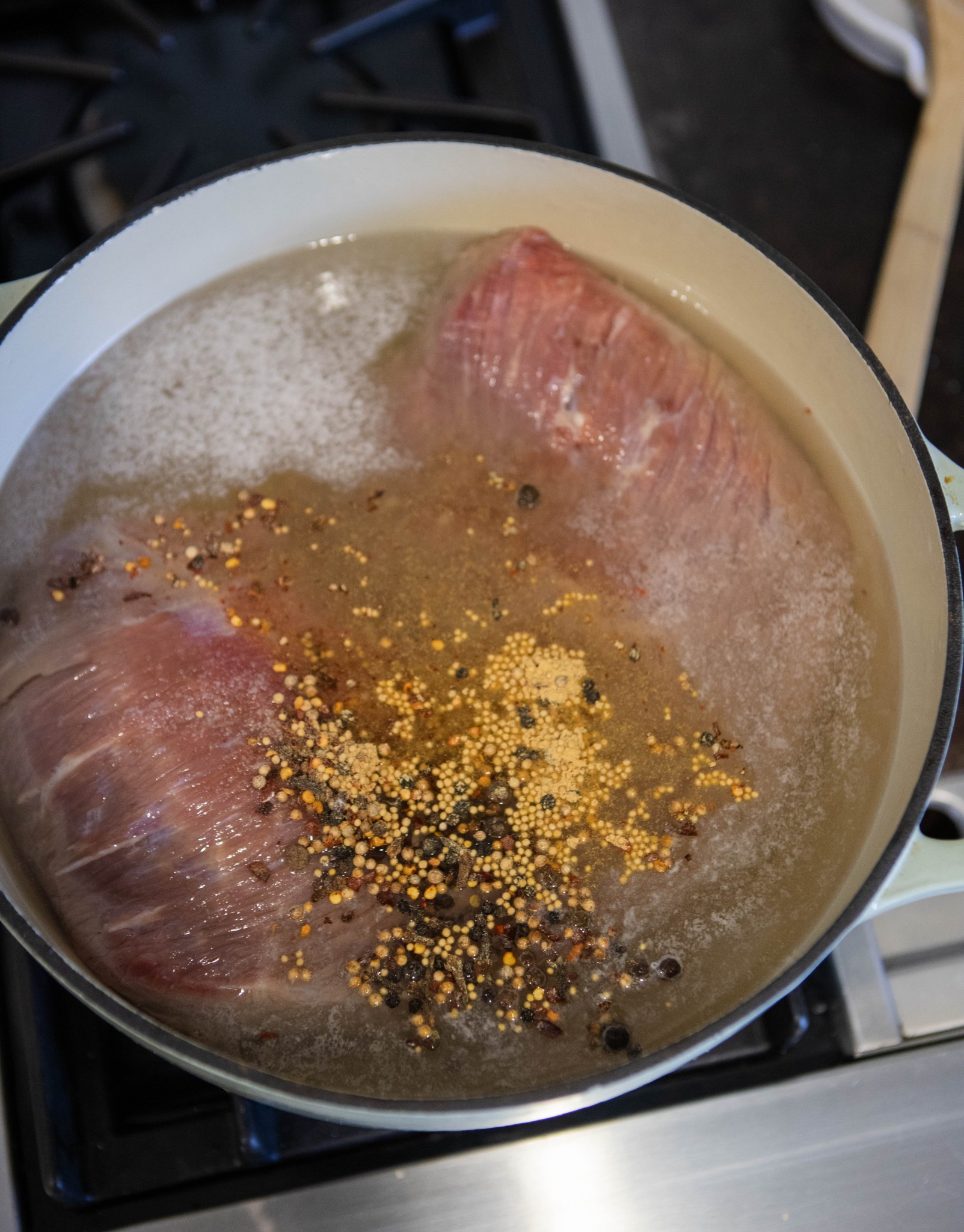
Bring to a boil, then reduce heat and cover, allowing to gently simmer for about 3 hours. Replenish water if needed, as there should always be enough water to cover the brisket. The brisket will be fork tender when done.
Remove from the water and slice against the grain. Make sure to reserve some of the cooking liquid for braising the cabbage and to just moisten the meat and other veggies as needed. I’ll be sharing how to cook the cabbage, potatoes and carrots in my next post.
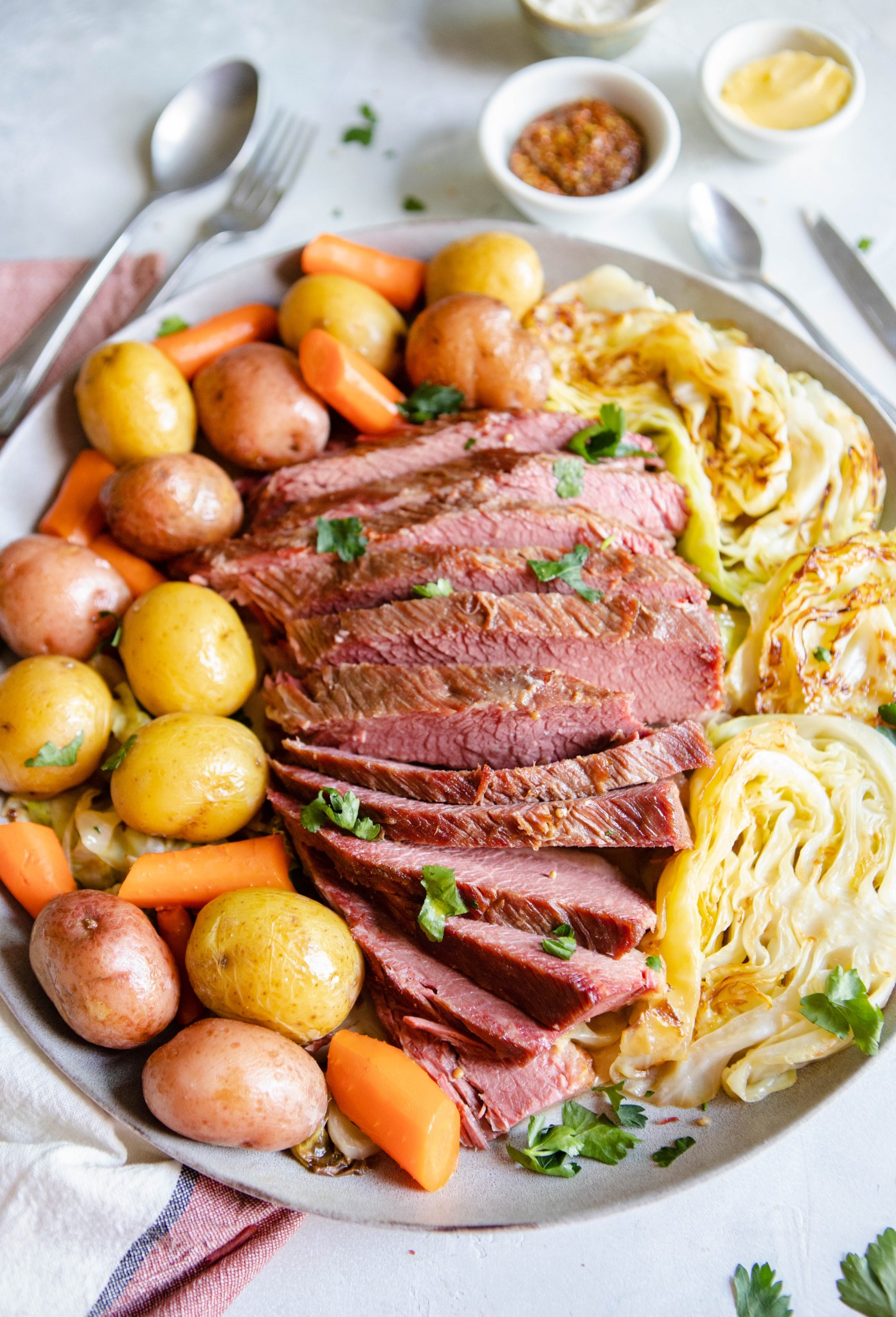
What is beef brisket?
Beef brisket comes from the breast section of the cow, under the first five ribs. Brisket is sold boneless and is great for slow cooking and braising. There’s 2 sections of brisket; a point cut and a flat cut. The point cut tends to be more flavorful since it has more fat running through the meat than the flat cut. It’s great for shredding.
The flat cut is less fatty, with the fat in a layer on the bottom. It’s also usually more expensive since it is more attractive and easier to slice nicely.
Most corned beef recipes don’t specify which cut to buy, just to choose a piece that has some nice fatty marbling running through it.
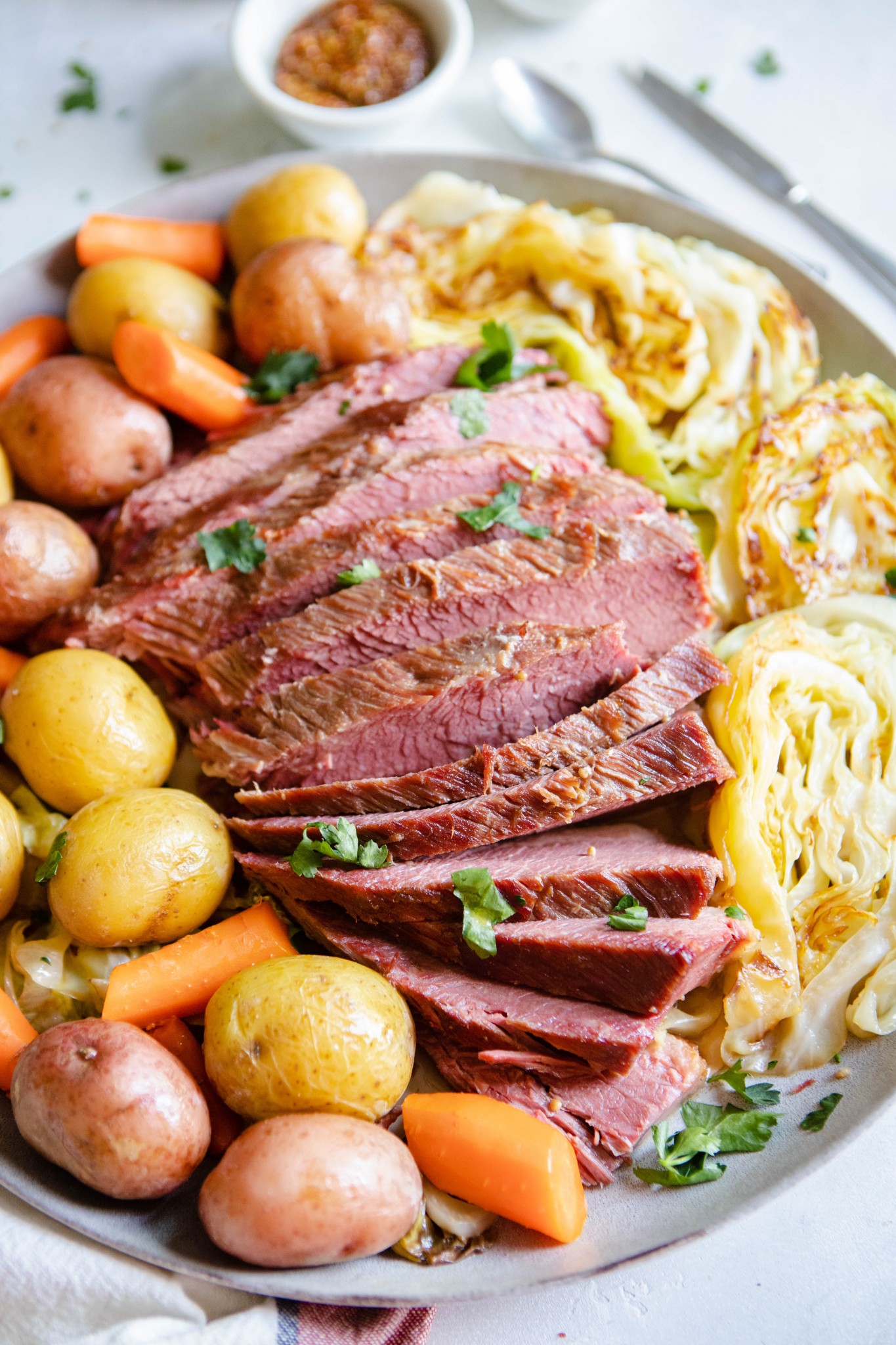
Do I have to use pink curing salt?
Pink salt is a common name for a mixture of sodium chloride, or table salt, and sodium nitrite. To not be confused with plain table salt, it is dyed pink, and must be used in moderation! This special type of curing salt is used to give cured meats their distinct flavor as well as create the pink coloring. Most importantly, pink salt is used to prevent the production of botulinum toxin in meat.
Because of the short curing time in this recipe, it is optional, however your meat will be bland brown if not used.
Sodium nitrite is naturally occurring in many foods, and is used in extreme moderation in this recipe. According to the Spruce Eats, “Nitrite is eventually used up in the meat during the curing process and converts to nitric oxide, which is not harmful and is safe for human consumption. The amount of nitrite in cured meats is not harmful at several times normal levels of consumption.”
Make sure you use pink salt no. 1 when making corned beef. No.1 is used in short term meat curing projects of less than 30 days.
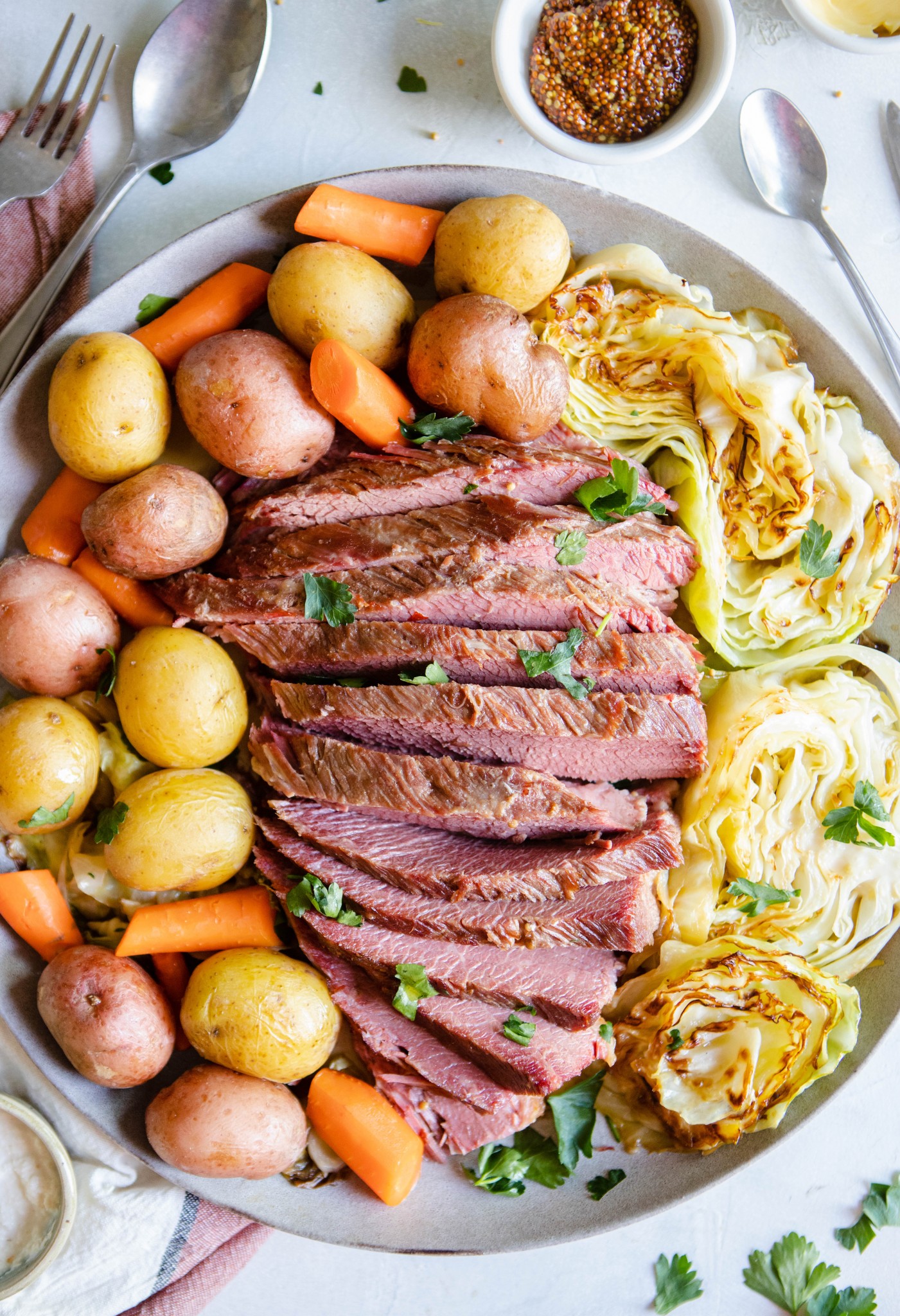
Why do we eat corned beef and cabbage on St. Patrick’s Day?
Just like the Irish don’t actually drink green beer on St. Patrick’s Day, they also don’t eat corned beef and cabbage. The Smithsonian blog has a very extensive and interesting article about the history of Irish corned beef that you can check out. But long story short, corned beef became associated with Irish immigrants here in America, and so as a nation we’ve just adopted it as a culturally significant dish.
Interestingly enough, the Smithsonian article has this to say about Irish corned beef; “The Irish immigrants almost solely bought their meat from kosher butchers. And what we think of today as Irish corned beef is actually Jewish corned beef thrown into a pot with cabbage and potatoes.”
What if I forget to take my corned beef out of the brine after 4 days?
No problem! Corned beef recipes call for brining the beef anywhere between 4-10 days, so if you forget it for a day or two, it’s no problem.
How to serve Corned Beef
We love to eat it the traditional way, with potatoes, cabbage and carrots. My family also served it with whole grain mustard and horseradish.
How to cook homemade corned beef in the Instant Pot
For a 5 pound brined corned beef brisket. Place the corned beef brisket, fat side up, on a rack. Sprinkle with the remaining brine blend and pour in 4 cups of water or beef broth. Lock the lid in place and close the vent. Select High Pressure and set or 90 minutes, with a natural pressure release. Do not use a quick pressure release. Remove corned beef and allow to rest for a few minutes before slicing.
How to cook in the Slow Cooker
For a 5 pound brined corned beef brisket, add 4 cups of water or beef broth and cook on low for about 8-10 hours, or on high for roughly 4-5 hours.
Make the best braised cabbage and steamed potatoes to serve with your corned beef
More Favorites from Howe We Live
Homemade Corned Beef
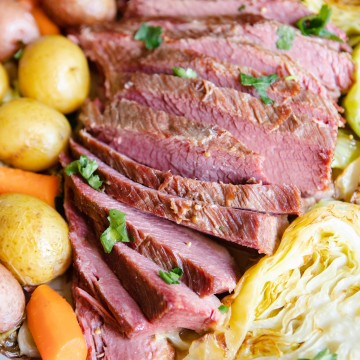
Homemade Corned Beef Brine
Ingredients
- ½ gallon water
- 5 teaspoon pink curing salt
- ¼ cup granulated sugar
- 10 garlic cloves
- ½ cup kosher salt
- 5 lb beef brisket
Brining Seasonings
- 2 teaspoon black peppercorns
- 2 teaspoon yellow mustard seeds
- 2 teaspoon coriander seeds
- 3 teaspoon dried red pepper flakes
- 2 teaspoon whole allspice
- 2 teaspoon ground nutmeg
- 2 cinnamon sticks broken into smaller pieces
- 6 bay leaves crumbled
- 2 teaspoon whole cloves
- 2 teaspoon ground ginger
Instructions
- Combine the water, pink salt, sugar, garlic and salt in a large pot.
- Take half of the brining seasonings and add them to the pot. Set the other half aside to use for cooking at a later date.
- Bring the water to a simmer, stirring until the sugar and salts have dissolved. Remove the pot from the heat and allow to come to fully come to room temperature. Refrigerate the brine for an hour or two until it’s completely chilled
- Place the brisket in the brine. Refrigerate the brisket in the brine for 4 days.
- Remove the brisket from the brine and rinse with cold water.
- To cook on the stovetop, place the brisket in a large pot, and fill with water to cover the brisket. Add the other half of brining spices we saved, as well as about 4 teaspoons of kosher salt.
- Bring to a boil, then reduce heat and cover, allowing to gently simmer for about 3 hours.
- Replenish water if needed, as there should always be enough water to cover the brisket. The brisket will be fork tender when done.
- Remove from the water and slice against the grain. Make sure to reserve some of the cooking liquid for braising the cabbage and to just moisten the meat and other veggies as needed.
- Serve with whole grain mustard and horseradish

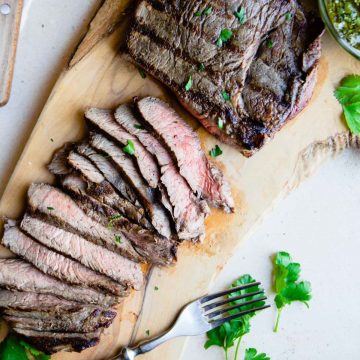
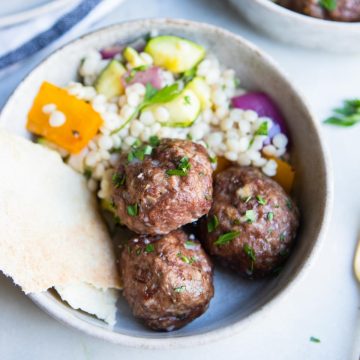
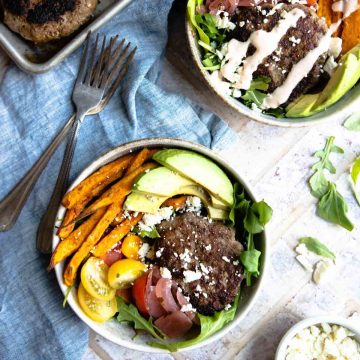
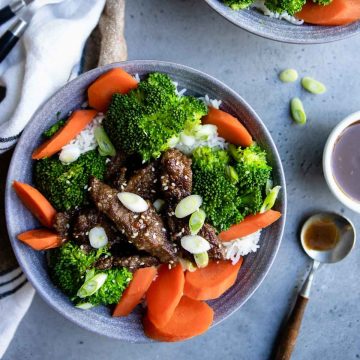
wade smith says
Is it recommended to cover the pot while brining?
Andrea Howe says
yes it’s a good idea so liquid doesn’t slosh around, but it is not necessary
DANIEL OUIMETTE says
Hi! I am making a 10 lbs brisket, so I double the recipe. Do I double the pink salt also?
Andrea Howe says
yes, you would
Lauren says
Made this last year for St. Patty’s and already planning on making it again this year. SO good! The perfect corned beef brine
Melissa says
Thanks for all the info, Andrea! Mine turned out absolutely perfect and this will be my new go to recipe!
Melissa